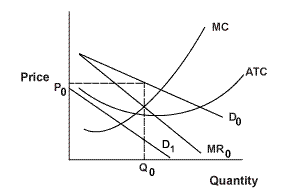A monopoly is the single seller of a good for which substitutes are not readily available. There should be high barriers to entry; i.e. other firms cannot enter the market easily and provide the good.
Monopolies often are created due to legal barriers. Patent laws grant inventors the exclusive right to produce and sell a product for a period of time (typically 17 years in the
In some instances, economies of scale exist so that there is a tendency toward a natural monopoly - one firm can provide the good most efficiently. One traditional example is the distribution of electrical power to a local community. Duplication of power lines within a community would increase overall costs. With natural monopolies, government policy to encourage more entrants may not make sense.
To some degree, natural monopolies occur in the computer industry, where customers want to adhere to a common standard. The common standard for personal computer operating systems is provided by Microsoft. Alternative operating systems for personal computers (such as LINUX) do not make sense for most consumers, so Microsoft has considerable monopoly power.
The Monopolist and Profit MaximizationThe monopolist has control both over the quantity produced and price charged; it also faces the entire demand curve for the good produced. Therefore, it will face a downward-sloping demand curve. It follows the general rule for profit maximization, MR = MC. As the monopolist does not know exactly how much consumers are willing to buy at particular prices, it must "search" for the optimum price.
Figure 3.12: Monopolist Profit Maximization
 |
As shown in the graph above, a monopolist facing demand curve D0 will produce quantity Q0 and the price charged will be equal to P0.
What happens if the monopolist later faces a demand curve such as D1? In that case, the monopolist cannot cover costs and will go out of business.






0 comments:
Post a Comment